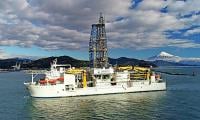Integrate, don’t close
On March 24, Kenya’s government demanded that the United Nations High Commissioner for Refugees (UNHCR) announce a clear timetable for closing the country’s, and Africa’s, two largest refugee camps – the Dadaab refugee camp near the Somali border and the Kakuma refugee camp near the borders of South Sudan and Uganda – within 14 days. The government also informed the UNCHR that it would shift more than half a million refugees currently living in Dadaab and Kakuma to the border with Somalia if the commissioner fails to announce a plan for the camps’ closure in the required timeframe.
It was not the first time the government made such a threat. The Kenyan authorities had announced their intention to close the Dadaab camp for the first time in May 2016, in what was largely seen as an attempt to capitalise on the public’s growing concerns about national security in the aftermath of the Garissa University College terror attack. The Kenyan High Court eventually blocked the move, deeming it unconstitutional.
Observers hope last month’s threat, which came on the back of growing tensions between Kenya and Somalia, and whose timeframe has now expired without any move to forcibly close the camp, is again a political theatre. However, the adamant tone assumed by government officials on the issue, and UNHCR chief Filippo Grandi’s recent visit to Nairobi, have caused aid workers and camp residents to worry that the threat, if not the time table, is serious. On April 8, a Kenyan court temporarily halted the government’s plans to forcefully evict the refugees, but the fate of the two camps still appears to be uncertain.
There is little doubt that Kenya has done a huge service by housing so many refugees on its soil for so many years. Indeed, Kakuma and Dadaab are among the oldest still-operational refugee camps in Africa. The Dadaab refugee camp was created in 1991 as a result of the Somali civil war and is currently home to more than a quarter of a million mostly Somali refugees. The Kakuma refugee camp was established a year later, and it is currently housing just less than 200,000 people. While approximately half come from South Sudan, more than 20 countries are represented in the camp’s population, with particularly large numbers from Sudan, Somalia, the Democratic Republic of the Congo, and Ethiopia.
Any attempt by the Kenyan government to close these camps without the willing participation of not only the UNHCR but also the refugees themselves, would produce an unmitigated humanitarian disaster. There is simply no way to move hundreds of thousands of people across multiple borders, and dump them in countries they do not want to return to, without inflicting large scale violence and suffering upon them. Moreover, as the residents of these camps are officially designated refugees, their forcible repatriation would violate international law. As the coronavirus pandemic is still raging in East Africa, such a large-scale movement of people will also spread the virus even more, and further stress the already beleaguered, and often barely functioning, healthcare systems across the region.
But these grave and currently insurmountable humanitarian concerns are not the only reason to oppose the closure of these two camps.
Refugee camps are often seen as temporary shelters, whose “displaced” inhabitants would return “home” once the conflict, or the natural catastrophe, that prompted their flight is resolved. But a significant majority of Kakuma and Dadaab’s populations were either born there or arrived at a very young age. They do not know any other home than these two camps and they do not have anywhere to return to.
Their long-term, and seemingly permanent, presence in Kenya is hardly an anomaly. Too often, the flight of refugee communities is the aim, rather than a byproduct, of conflicts that trigger large-scale migration waves. So their home countries do not take any action to facilitate their safe return. Even when the causes behind large-scale forced migration are “natural”, they are rarely mitigated sufficiently to enable the safe return of most refugees. As a result, temporary tent encampments evolve into permanent urban neighbourhoods and even cities over time. This pattern started in the late 1940s during the formation of Israel in Palestine and the partition of colonial India, and since been repeated not only in Kakuma and Dadaab, but across Africa and globally.
Long-term forced migration and permanent refugee communities will persist into the foreseeable future, given that the geostrategic, political and environmental conditions producing them are becoming more serious with each passing year. Indeed, in 2020, the number of forcefully displaced people around the world surpassed 80 million. Of that total, only 26 million are officially registered refugees and more than 45 million are ‘internally displaced persons’ who have been forced to flee their homes but remained inside their country of origin.
This dynamic has led experts, scholars, and international agencies, including the UN, to recognise and reconceive refugee camps as permanent settlements that need to be integrated into their surrounding host communities. As many people living in these camps do not really have the option to ‘return home’ in the foreseeable future, it is counterproductive to keep them in ‘temporary’, fenced off encampments, and allow them to be perceived by host communities as ‘guests’ who are overstaying their welcome and draining their country’s already limited resources.
In Kakuma, the UNHCR created a new settlement, Kalobeyei, in 2016. It boasts an unprecedented level of integration with the local community. It allows local residents to access the superior services, institutions and infrastructure available for camp residents while also enabling refugees to move and work more easily in the surrounding region. Not surprisingly, the experiment has improved the refugees’ relations with the local population significantly.
Accompanying the growing support for greater integration of refugee settlements into host communities has been the recognition of the importance of these camps as sites of significant 'intangible cultural heritage' deserving of preservation. Initially, the calls for the preservation of refugee cultural heritage was limited to built environments, such as Palestinian refugee camps that evolved into lively cities over time. But now, organisations like UNESCO as well as refugee scholars are increasingly realising that long-term refugee settlements such as Kakuma and Dadaab have developed their own unique and distinctive local cultures and identities that deserve protection and preservation in their own right.
Excerpted: ‘Integrate, don’t close, Africa’s largest refugee camps’
Aljazeera.com
-
 Jason Momoa Cherishes Hosting Ozzy Osbourne's Final Gig Ahead Of His Death
Jason Momoa Cherishes Hosting Ozzy Osbourne's Final Gig Ahead Of His Death -
 Real Reason Timothee Chalamet Thanked Kylie Jenner At Awards Revealed
Real Reason Timothee Chalamet Thanked Kylie Jenner At Awards Revealed -
 Will King Charles Attend Funeral Of Prince Philip's First Cousin, Princess Irene?
Will King Charles Attend Funeral Of Prince Philip's First Cousin, Princess Irene? -
 'Furious' Prince William Wants Andrew As Far Away As Possible
'Furious' Prince William Wants Andrew As Far Away As Possible -
 Blood Moon: When And Where To Watch In 2026
Blood Moon: When And Where To Watch In 2026 -
 Apple Foldable IPhone Tipped For 2026 Launch With A20 Pro Chip And C2 Modem
Apple Foldable IPhone Tipped For 2026 Launch With A20 Pro Chip And C2 Modem -
 Meghan Lends Credence To Reports Of Rift With Kim Kardashian On Chicago's Birthday
Meghan Lends Credence To Reports Of Rift With Kim Kardashian On Chicago's Birthday -
 Florida Woman’s Alleged Bid To Bribe Police Ends In Unexpected Discovery
Florida Woman’s Alleged Bid To Bribe Police Ends In Unexpected Discovery -
 James Van Der Beek Strongly Opposes The Idea Of New Year In Winter
James Van Der Beek Strongly Opposes The Idea Of New Year In Winter -
 Elon Musk’s Starlink Rival Eutelsat Partners With MaiaSpace For Satellite Launches
Elon Musk’s Starlink Rival Eutelsat Partners With MaiaSpace For Satellite Launches -
 Fans Feel For Leonardo DiCaprio As He Gets Awkwardly Snubbed: Watch
Fans Feel For Leonardo DiCaprio As He Gets Awkwardly Snubbed: Watch -
 Japan Launches The World’s First Trial To Extract Rare Earth Elements
Japan Launches The World’s First Trial To Extract Rare Earth Elements -
 Prince Harry Breaks Cover In California Amid Tension At Home With Meghan Markle
Prince Harry Breaks Cover In California Amid Tension At Home With Meghan Markle -
 ASAP Rocky Makes Massive Comeback With New Album
ASAP Rocky Makes Massive Comeback With New Album -
 Amanda Seyfried Unveils How Channing Tatum Teased Her On 'Dear John' Set
Amanda Seyfried Unveils How Channing Tatum Teased Her On 'Dear John' Set -
 Blue Moon 2026: Everything You Need To Know
Blue Moon 2026: Everything You Need To Know



